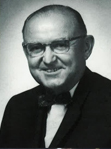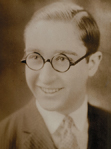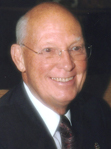
Edwin Crosby, M.D.
As a medical intern and clinician during the 1930s and 1940s, Edwin Crosby, M.D., recognized the inherent value of supply chain to healthcare, a philosophy he carried with him throughout his storied career that included being one of the youngest directors at Johns Hopkins Hospital, the founding director of what now is The Joint Commission and president and CEO of the American Hospital Association in the 1960s where he helped found what now is the Association for Healthcare Resource and Materials Management (AHRMM).

Irving Mills
From the 1920s through the 1950s, Irving Mills transformed his father’s garment factory into a leading medical supply distribution company that pioneered the use of consignment shipping for hospital customers. Following a brief retirement in the 1960s, Mills returned to healthcare distribution, helping his sons found one of the largest healthcare distribution companies in the nation.




 Future Famers Class of 2016 - Standing (left to right): Erik Walerius, Nisha Lulla and Rob Proctor. Not pictured: Jimmy Henderson, Kate Polczynski and Baljeet Sangha.
Future Famers Class of 2016 - Standing (left to right): Erik Walerius, Nisha Lulla and Rob Proctor. Not pictured: Jimmy Henderson, Kate Polczynski and Baljeet Sangha. Michael Louviere accepts the inaugural Dean S. Ammer Award for Supply Chain Excellence on behalf of his Supply Chain team at Ochsner Health System.
Michael Louviere accepts the inaugural Dean S. Ammer Award for Supply Chain Excellence on behalf of his Supply Chain team at Ochsner Health System.